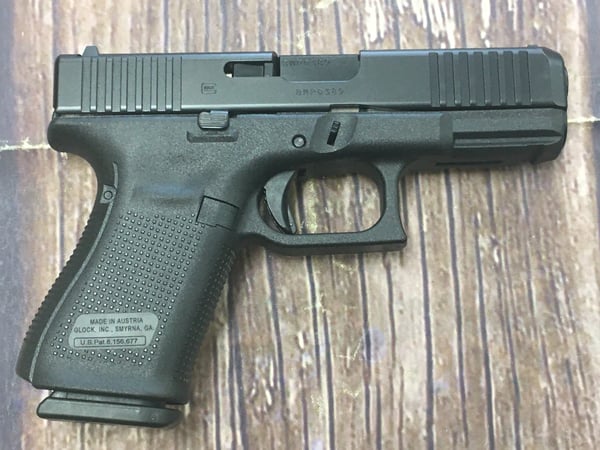
Glock 23: A Comprehensive Overview of Glock’s Compact .40 Caliber Handgun
The Glock 23, a compact handgun chambered in .40 S&W, has earned a reputation as a reliable and versatile firearm for law enforcement, personal defense, and recreational shooting. This article provides a detailed overview of the Glock 23, exploring its features, performance, history, and suitability for various applications. Understanding the nuances of the Glock 23 is crucial for anyone considering owning or carrying this popular pistol.
History and Development
Introduced in 1990, the Glock 23 was designed as a compact alternative to the full-size Glock 22, also chambered in .40 S&W. Gaston Glock, the founder of Glock Ges.m.b.H., sought to create a more concealable handgun without sacrificing significant firepower or reliability. The .40 S&W cartridge was chosen for its stopping power, making the Glock 23 an attractive option for law enforcement agencies looking to transition from 9mm handguns. The Glock 23 quickly gained popularity due to its manageable recoil, accuracy, and the Glock’s renowned durability. [See also: Glock 19: A Versatile 9mm Pistol]
Design and Features
Dimensions and Ergonomics
The Glock 23 features a compact frame, making it easier to conceal than full-size handguns. It has an overall length of 7.36 inches, a height of 5.00 inches, and a width of 1.26 inches. The barrel length is 4.02 inches. These dimensions strike a balance between concealability and shootability. The Glock 23 incorporates Glock’s signature polymer frame, contributing to its lightweight design and resistance to corrosion. The grip angle is designed for natural pointing, enhancing accuracy and control.
Operating Mechanism
Like all Glock pistols, the Glock 23 operates using a striker-fired, short recoil system. This simple and reliable mechanism contributes to the gun’s ease of use and maintenance. The Glock 23 features a Safe Action trigger system, which incorporates three independent safeties: a trigger safety, a firing pin safety, and a drop safety. These safeties work in conjunction to prevent accidental discharges while allowing for a consistent trigger pull.
Magazine Capacity
The standard magazine capacity for the Glock 23 is 13 rounds of .40 S&W ammunition. High-capacity magazines are also available in some jurisdictions, offering increased firepower. The magazines are constructed from durable polymer and steel, ensuring reliable feeding and longevity.
Sights
The Glock 23 typically comes equipped with fixed sights, although aftermarket options are widely available. The standard sights are polymer and feature a white dot front sight and a white outline rear sight. Many users upgrade to tritium night sights for improved visibility in low-light conditions. [See also: Aftermarket Glock Accessories: Enhancing Performance and Customization]
Performance and Handling
Recoil Management
The .40 S&W cartridge is known for its snappy recoil, but the Glock 23’s design helps mitigate this. The polymer frame absorbs some of the recoil, and the grip angle allows for a firm hold. With proper technique, the Glock 23 can be shot accurately and comfortably, even during rapid fire.
Accuracy
The Glock 23 is capable of excellent accuracy, especially in the hands of an experienced shooter. The consistent trigger pull and reliable operating mechanism contribute to its accuracy potential. Many shooters find the Glock 23 to be accurate out to 25 yards or more.
Reliability
Glock pistols are renowned for their reliability, and the Glock 23 is no exception. Its simple design and robust construction make it highly resistant to malfunctions. The Glock 23 is often chosen by law enforcement agencies and individuals who require a dependable firearm in critical situations. Regular maintenance, including cleaning and lubrication, is essential for ensuring continued reliability.
Applications
Law Enforcement
The Glock 23 has been widely adopted by law enforcement agencies as a duty weapon. Its compact size, manageable recoil, and potent .40 S&W cartridge make it a suitable choice for officers in various roles. The Glock 23 provides a balance between concealability and firepower, making it a versatile option for patrol officers and detectives alike.
Personal Defense
The Glock 23 is a popular choice for personal defense, both for concealed carry and home defense. Its compact size allows for comfortable concealed carry, while its .40 S&W cartridge provides ample stopping power. The Glock 23’s reliability and ease of use make it a suitable option for individuals with varying levels of experience. [See also: Choosing the Right Handgun for Self-Defense]
Recreational Shooting
The Glock 23 is also enjoyed by recreational shooters for target practice and competition. Its accuracy and manageable recoil make it a fun and challenging handgun to shoot. Many shooters appreciate the Glock 23’s simplicity and durability, making it a reliable option for range sessions.
Variants and Generations
The Glock 23 has evolved through several generations, each incorporating improvements and refinements. The current generation, Gen5, features several enhancements, including a smoother trigger pull, an improved grip texture, and an ambidextrous slide stop lever. Earlier generations, such as Gen3 and Gen4, are also widely available and remain popular choices.
Pros and Cons
Pros:
- Compact size for easy concealment
- Potent .40 S&W cartridge
- Reliable Glock design
- Manageable recoil
- Good accuracy
Cons:
- .40 S&W cartridge can be expensive
- Recoil may be challenging for some shooters
- Limited magazine capacity compared to some 9mm handguns
Conclusion
The Glock 23 is a well-regarded compact handgun that offers a balance of concealability, firepower, and reliability. Its popularity among law enforcement, personal defense practitioners, and recreational shooters is a testament to its versatility and performance. While the .40 S&W cartridge may not be for everyone, the Glock 23 remains a viable option for those seeking a compact and potent handgun. Before purchasing any firearm, it is essential to consider your individual needs and preferences, as well as any applicable laws and regulations. Always practice safe gun handling and seek professional training to ensure proficiency and responsible ownership.
